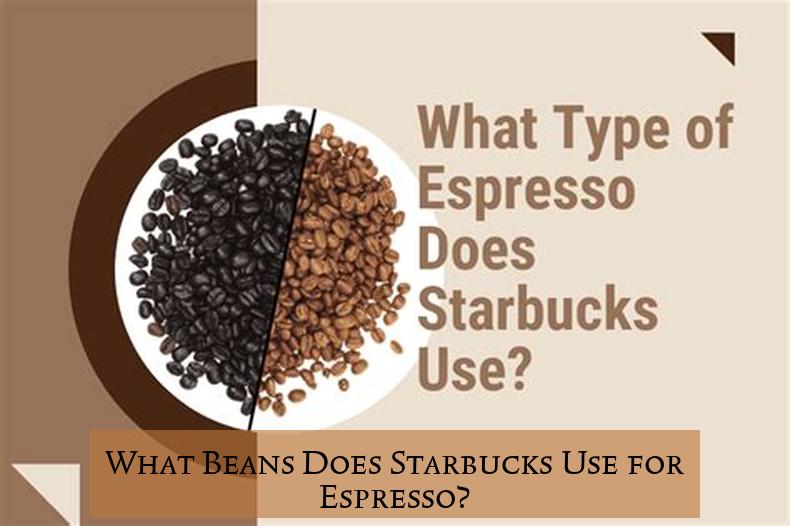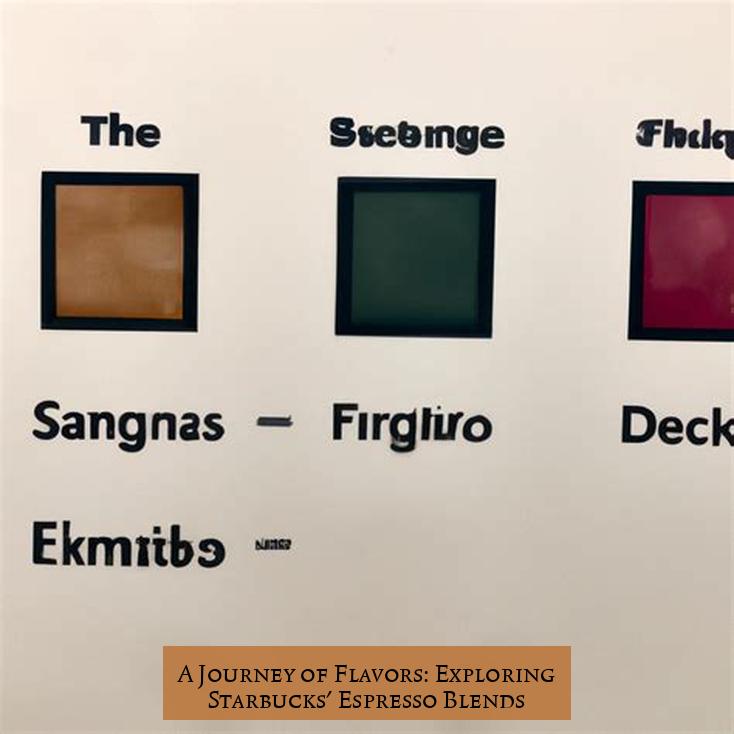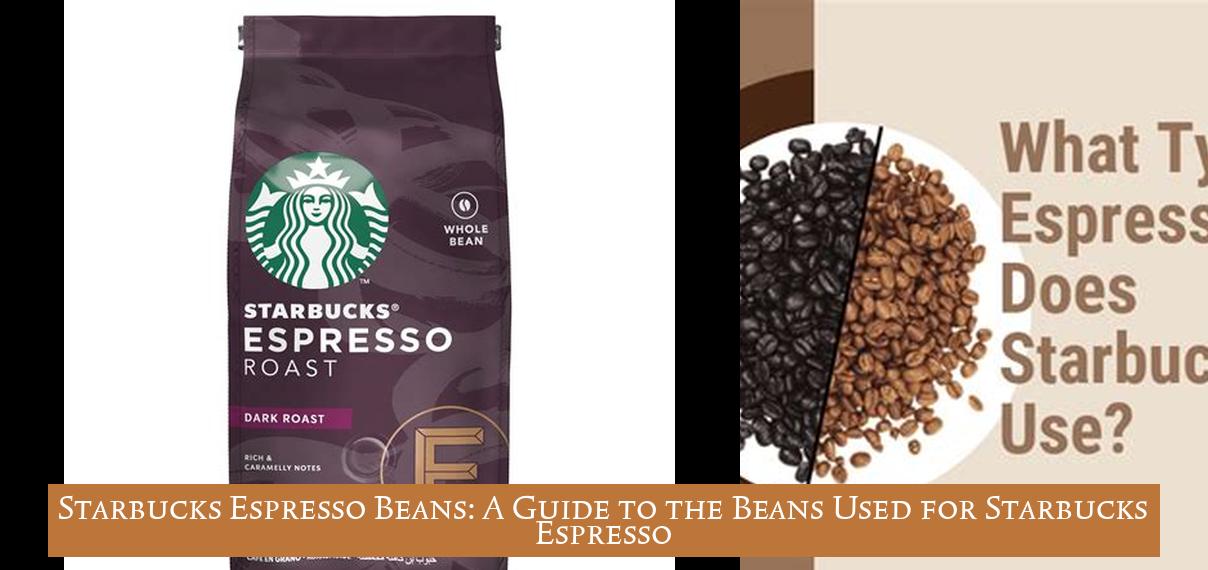Welcome to the aromatic world of espresso, where every sip tells a story of passion, expertise, and, of course, the perfect blend of coffee beans. Have you ever wondered what beans Starbucks uses for its iconic espresso? Join us on a flavorful journey as we uncover the secrets behind Starbucks’ commitment to quality, the art of bean selection, and the craft of blending expertise. Get ready to sip, savor, and satisfy your curiosity as we explore the delightful nuances of Starbucks’ espresso blends. So grab your favorite mug and let’s dive into the irresistible world of coffee connoisseurship!
Key Takeaways
- Starbucks uses a blend of beans sourced from Latin America and Asia-Pacific for their Espresso Roast.
- The beans used for Starbucks espresso are 100% arabica, ensuring high quality and delicious flavor.
- Starbucks’ signature Espresso Roast has notes of molasses and caramelized sugar, creating a rich and caramelly sweetness.
- Starbucks does not use robusta beans in their espresso; they primarily use 100% arabica beans.
- The blending of beans from varied regions results in unique flavor combinations in Starbucks’ Espresso Roast.
- Starbucks’ Espresso Roast is perfect for making classic espresso drinks and stands boldly on its own in a doppio.
What Beans Does Starbucks Use for Espresso?

Starbucks, a global coffeehouse giant, is renowned for its diverse coffee offerings, including its signature espresso. The beans used for Starbucks espresso play a crucial role in determining the beverage’s taste and aroma. In this comprehensive guide, we will delve into the world of Starbucks espresso beans, exploring their origin, flavor profile, and the unique blends that create the iconic Starbucks espresso experience.
The Art of Bean Selection: Starbucks’ Commitment to Quality
Starbucks meticulously sources its coffee beans from various regions around the globe, ensuring that only the finest beans make it into their espresso blends. The company primarily uses 100% arabica beans, known for their superior quality and complex flavor profiles. Arabica beans are grown at higher altitudes and require specific climatic conditions, resulting in a rich, smooth, and aromatic coffee experience.
A Journey of Flavors: Exploring Starbucks’ Espresso Blends

Starbucks offers a range of espresso blends, each with its own distinct flavor profile. The signature Espresso Roast is a dark roast blend that delivers a rich and caramelly sweetness, with notes of molasses and brown sugar. This classic blend is the backbone of many popular Starbucks espresso drinks, including lattes, cappuccinos, and Americanos.
For those who prefer a lighter and brighter espresso experience, Starbucks offers the Blonde Espresso Roast. This blend is crafted from select Latin American and East African beans, roasted to coax out sweet, vibrant notes of candied apple and bittersweet chocolate. The Blonde Espresso Roast is an excellent choice for those who enjoy a more nuanced and fruity espresso.
Blending Expertise: Crafting the Perfect Espresso
Starbucks’ skilled coffee roasters blend beans from different regions to create unique flavor combinations. The Latin American beans bring a rich and earthy base to the blend, while the Asia-Pacific beans add a touch of sweetness and complexity. This careful blending process ensures that each espresso shot is balanced, flavorful, and consistent.
Sustainable and Ethical Sourcing: Starbucks’ Commitment to Responsibility
Starbucks is committed to sustainable and ethical coffee sourcing practices. The company works closely with coffee farmers around the world to ensure that their beans are grown and harvested responsibly. Starbucks also supports programs that improve the livelihoods of coffee farmers and their communities, promoting fair trade and environmental conservation.
Frequently Asked Questions
Q: What type of beans does Starbucks use for espresso?
A: Starbucks uses 100% arabica beans for their espresso blends.
Q: What is the flavor profile of Starbucks’ Espresso Roast?
A: The Espresso Roast is a dark roast blend with notes of molasses, caramelized sugar, and a bold, caramelly sweetness.
Q: Does Starbucks use robusta beans in their espresso?
A: No, Starbucks primarily uses 100% arabica beans for their espresso.
Q: How does Starbucks ensure the quality of their espresso beans?
A: Starbucks meticulously sources its beans from various regions and works closely with coffee farmers to ensure sustainable and ethical practices.
What type of beans does Starbucks use for their espresso?
Starbucks uses a blend of 100% arabica beans sourced from Latin America and Asia-Pacific for their Espresso Roast, ensuring high quality and delicious flavor.
What are the key characteristics of Starbucks’ Espresso Roast?
Starbucks’ signature Espresso Roast has notes of molasses and caramelized sugar, creating a rich and caramelly sweetness. It is a classic and time-honored dark roast perfect for making classic espresso drinks.
Does Starbucks use robusta beans in their espresso?
No, Starbucks does not use robusta beans in their espresso; they primarily use 100% arabica beans sourced from Latin America and Asia-Pacific.
Why does Starbucks blend beans from varied regions for their Espresso Roast?
The blending of beans from varied regions results in unique flavor combinations in Starbucks’ Espresso Roast, contributing to its rich and complex taste profile.
What kind of espresso does Starbucks use in their lattes?
Starbucks uses a delicious blend of Latin American and Asia/Pacific coffees for their espresso, which has a rich and caramelly sweetness and is at the heart of their handcrafted lattes.
Where does Starbucks source the beans for their Espresso Roast?
Starbucks sources the beans for their Espresso Roast from multiple regions, including Latin America and Asia-Pacific, ensuring a perfect melding of beans and roast that reveals notes of rich molasses.

